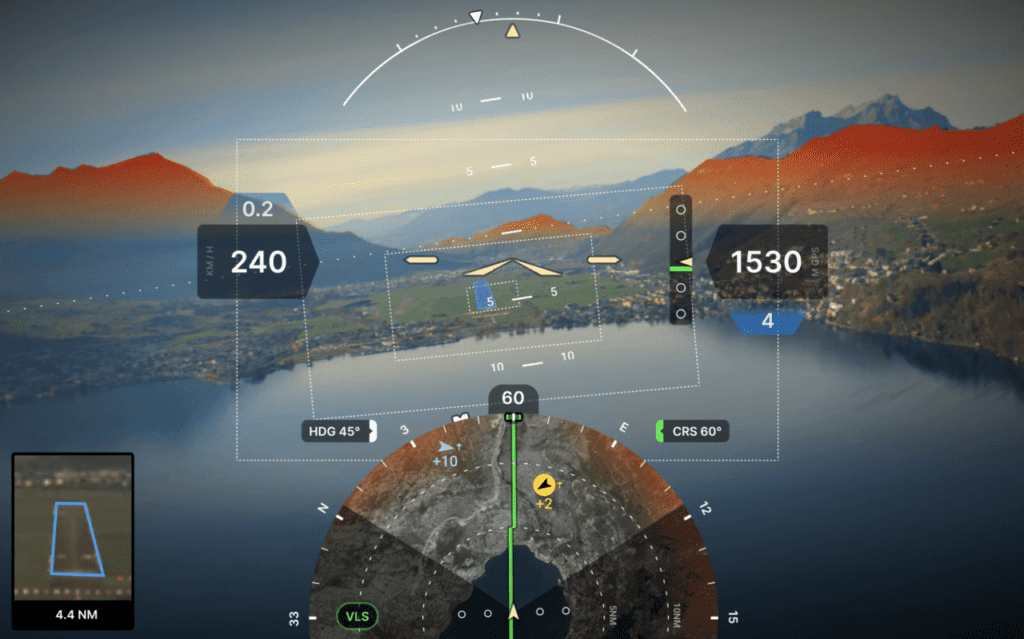Intel and Daedalean Share Insights on Implementation of Machine Learning in Embedded Systems


Intel and Daedalean just published a white paper presenting a reference design for a computational platform that can carry a machine-learned application and that is also certifiable. (Photo: Intel)
Intel wrote a white paper in collaboration with Daedalean, a startup working on machine-learned solutions in the aviation space. Published this week, the report features a reference design for an AI application that can act as a never-distracted copilot. This new design is certifiable, meaning it is expected to pass regulatory tests. By releasing this paper, the two companies hope to provide actionable steps for companies looking to integrate certifiable machine-learned electronics and applications into their aircraft.
The white paper was authored by Debra Aubrey, Technical Product Marketing Manager at Intel Corporation; Dr. Yemaya Bordain, President of Americas at Daedalean; and Dr. Niels Haandbaek, Director of Engineering at Daedalean.
Artificial intelligence is dominating 2023 news cycles and is becoming a formidable tool in many industries. Until recently, however, no small, multidirectional embedded computational equipment existed that was operational and that also met aviation safety requirements.
In fact, the industry still needs the first step towards a future with multidirectional embedded computational equipment: a reference architecture, or specific list of requirements to create the right types of computers. A reference architecture encompasses regulatory requirements, low-level and high-level softwares, and silicon solutions for machine-learned applications. Regulators also need to review a reference architecture and certify that it will create predictable, safe behavior in the sky.
Daedalean, the Swiss-based startup responsible for the AI copilot, one of the most advanced machine-learned systems in avionics, has been working on a machine learning algorithm and a reference architecture for a computer able to execute it. They tested the reference architecture in labs and on in-flight aircrafts to develop what they call situational intelligence, the ability for machine-learned applications to predict and respond to future events.
To make the time-to-market quicker for companies interested in their applications, Daedalean’s team partnered with Intel, who provides much-needed silicon to manufacture these applications. The two companies collaborated on a reference architecture that speeds up the time-to-market, allowing companies to integrate machined-learned computers into their cockpits faster.

In this white paper, Daedalean and Intel lay out the reference architecture for certifiable embedded electronics. The report discusses the challenges to applying software assurance to machine-learned devices, the visual awareness system they utilize, and the current and future role of embedded computing in the industry. They also take a look at the software and hardware requirements which ensure aviation systems are safe and effective.
According to a statement provided by Intel and Daedalean, the reference architecture “can significantly reduce time-to-market for companies interested in incorporating what they have coined situational intelligence—the ability not only to understand and make sense of the current environment and situation but also anticipate and react to a future situation—in the cockpit.”
“The publication provides actionable insights for companies developing solutions in the field of certifiable embedded electronics for A&D. This is the first document ever to present a real-world working example and provide guidance on how to approach the challenges of implementing the machine learning application in airworthy embedded systems in general: how to ensure that your ML-based system can meet the computational requirements, certification requirements, and the size, weight, and power (SWaP) limitations at the same time. The approach described in the document is driving the aviation industry’s need for high-performance embedded computing.”
From ChatGPT to AI TikTok filters, machine-learned applications are seemingly everywhere. This white paper can help bring the power of AI to avionics. It is the first document to present a working example of a machine-learned system and to provide guidance about how to overcome application challenges.
The actionable recommendations and findings in the new report can drive the industry’s desire for high-performance embedded computing. It offers a new way to approach challenges and to ensure future applications meet the industry requirements. This foundational real-world example from Daedalean and Intel has the potential to cultivate a new wave of airworthy machine-learned applications.
The post Intel and Daedalean Share Insights on Implementation of Machine Learning in Embedded Systems appeared first on Avionics International.
—————
Boost Internet Speed–
Free Business Hosting–
Free Email Account–
Dropcatch–
Free Secure Email–
Secure Email–
Cheap VOIP Calls–
Free Hosting–
Boost Inflight Wifi–
Premium Domains–
Free Domains





